-
 Bitcoin
Bitcoin $77,027.1529
-2.02% -
 Ethereum
Ethereum $1,481.1826
-3.54% -
 Tether USDt
Tether USDt $0.9993
-0.05% -
 XRP
XRP $1.8296
-4.30% -
 BNB
BNB $560.8735
0.04% -
 USDC
USDC $1.0000
0.00% -
 Solana
Solana $106.4811
-1.28% -
 TRON
TRON $0.2301
-1.75% -
 Dogecoin
Dogecoin $0.1461
-3.57% -
 Cardano
Cardano $0.5701
-4.50% -
 UNUS SED LEO
UNUS SED LEO $9.1565
1.71% -
 Toncoin
Toncoin $3.0385
-1.07% -
 Chainlink
Chainlink $11.3801
-0.72% -
 Avalanche
Avalanche $16.7067
-3.18% -
 Stellar
Stellar $0.2204
-5.32% -
 Shiba Inu
Shiba Inu $0.0...01103
-1.50% -
 Sui
Sui $1.9430
-3.84% -
 Hedera
Hedera $0.1495
-7.03% -
 MANTRA
MANTRA $6.2785
0.90% -
 Bitcoin Cash
Bitcoin Cash $274.1421
-2.31% -
 Litecoin
Litecoin $71.4728
-0.28% -
 Dai
Dai $0.9999
-0.04% -
 Polkadot
Polkadot $3.3774
-6.23% -
 Ethena USDe
Ethena USDe $0.9984
-0.06% -
 Bitget Token
Bitget Token $4.0504
-1.15% -
 Hyperliquid
Hyperliquid $12.8008
9.64% -
 Pi
Pi $0.5745
-0.40% -
 Monero
Monero $194.8886
-4.01% -
 OKB
OKB $52.0275
-1.31% -
 Uniswap
Uniswap $4.8699
-4.72%
What are the main functions of Chainlink?
Chainlink connects smart contracts to real-world data, enabling secure data feeds, API integration, and cross-chain interoperability for DeFi, insurance, and supply chain applications.
Apr 02, 2025 at 11:49 pm
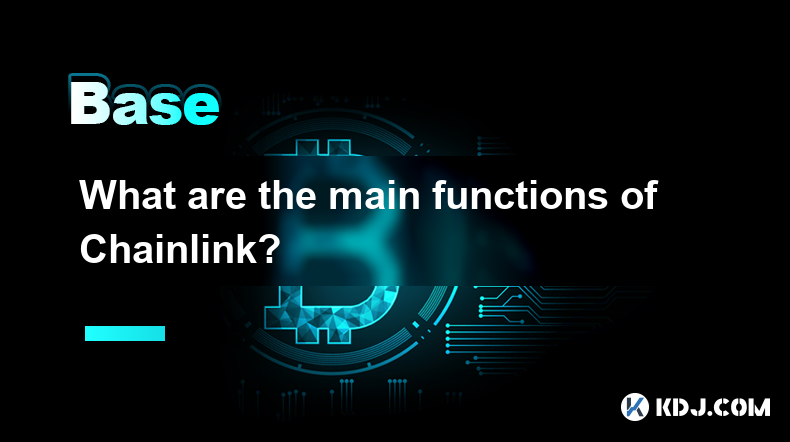
Chainlink is a decentralized oracle network that plays a crucial role in connecting smart contracts with real-world data and external APIs. The primary function of Chainlink is to facilitate the seamless integration of off-chain data into on-chain smart contracts, enabling them to execute based on real-world events and information. This integration is vital for the functionality and reliability of decentralized applications (dApps) across various industries, including finance, insurance, and supply chain management. By providing a secure and reliable bridge between on-chain and off-chain environments, Chainlink enhances the capabilities of smart contracts and expands their potential use cases.
Secure Data Feeds
One of the main functions of Chainlink is to provide secure data feeds to smart contracts. These data feeds are essential for smart contracts to access real-time information from external sources, such as price feeds, weather data, and sports scores. Chainlink achieves this by aggregating data from multiple sources and using cryptographic techniques to ensure the integrity and authenticity of the data. This process helps prevent manipulation and ensures that smart contracts receive accurate and reliable data, which is critical for their proper execution and the trust of users.
Decentralized Oracle Networks
Chainlink operates on a decentralized oracle network, which is a network of independent node operators that provide data and computation services to smart contracts. This decentralized approach enhances the security and reliability of the data feeds, as it reduces the risk of a single point of failure and potential manipulation by any single entity. Node operators are incentivized through Chainlink's native token, LINK, which is used to pay for the services provided by the network. This incentivization model encourages node operators to maintain high standards of performance and reliability, further enhancing the trustworthiness of the Chainlink network.
External API Integration
Another key function of Chainlink is its ability to integrate with external APIs. This capability allows smart contracts to interact with a wide range of off-chain services and data sources, expanding their functionality and potential use cases. For example, a smart contract could use Chainlink to access real-time stock prices from a financial API or to retrieve weather data from a meteorological service. By enabling smart contracts to connect with external APIs, Chainlink empowers developers to create more sophisticated and versatile dApps that can respond to a broader range of real-world events and data.
Computation and Off-Chain Processing
Chainlink also provides the ability to perform computation and off-chain processing for smart contracts. This function is particularly useful for tasks that are computationally intensive or require access to data that is not readily available on-chain. By offloading these tasks to the Chainlink network, smart contracts can execute more efficiently and effectively, without being constrained by the limitations of the blockchain. Examples of such tasks include complex data analysis, machine learning algorithms, and the processing of large datasets. This capability further enhances the power and flexibility of smart contracts, enabling them to handle more complex and data-intensive applications.
Cross-Chain Interoperability
Chainlink plays a crucial role in enabling cross-chain interoperability, allowing smart contracts on different blockchains to communicate and share data. This function is essential for the development of a more interconnected and efficient blockchain ecosystem, as it enables the seamless transfer of assets and information across different networks. Chainlink achieves this through its cross-chain interoperability protocol (CCIP), which facilitates the secure and reliable exchange of data between different blockchains. By providing this interoperability, Chainlink helps to break down the silos between different blockchain networks and fosters greater collaboration and innovation within the cryptocurrency industry.
Decentralized Finance (DeFi) Applications
Chainlink has become an integral part of the decentralized finance (DeFi) ecosystem, providing essential data feeds and oracle services to various DeFi protocols. DeFi applications, such as lending platforms, decentralized exchanges, and yield farming protocols, rely on accurate and timely data to function effectively. Chainlink's secure data feeds and decentralized oracle network ensure that these DeFi applications can access the real-time price data, interest rates, and other critical information they need to operate. This integration has helped to drive the growth and adoption of DeFi, as it provides the necessary infrastructure for these applications to function reliably and securely.
Insurance and Risk Management
Chainlink's oracle services have also found applications in the insurance and risk management sectors. Smart contracts can use Chainlink to access real-time data on events such as natural disasters, flight delays, or crop yields, which can then be used to automatically trigger insurance payouts or adjust risk assessments. This automation can significantly improve the efficiency and transparency of insurance processes, reducing the need for manual claims processing and minimizing the potential for fraud. By providing reliable and verifiable data feeds, Chainlink enables insurance companies to offer more innovative and responsive products, enhancing their ability to manage risk and serve their customers.
Supply Chain Management
In the realm of supply chain management, Chainlink's oracle services can be used to track and verify the movement of goods and materials across different stages of the supply chain. Smart contracts can access real-time data on shipment locations, product quality, and inventory levels, enabling them to automatically execute actions such as releasing payments or triggering alerts for potential issues. This integration can enhance the transparency and efficiency of supply chain processes, reducing the risk of errors and disputes. By providing a reliable and decentralized source of data, Chainlink helps to build trust and collaboration among the various parties involved in the supply chain, from manufacturers to distributors to end consumers.
Gaming and NFTs
Chainlink's oracle services have also found applications in the gaming and non-fungible token (NFT) sectors. In gaming, Chainlink can be used to provide random number generation for provably fair games, ensuring that the outcomes are truly random and verifiable. Additionally, Chainlink can be used to integrate real-world data into gaming experiences, such as weather conditions or sports results, to create more immersive and dynamic gameplay. In the NFT space, Chainlink can be used to verify the authenticity and provenance of digital assets, enhancing their value and trustworthiness. By providing these oracle services, Chainlink helps to drive innovation and adoption in the gaming and NFT sectors, creating new opportunities for developers and users alike.
Chainlink's Role in the Future of Blockchain
As the blockchain industry continues to evolve and mature, Chainlink is poised to play an increasingly important role in enabling the next generation of decentralized applications and smart contracts. By providing secure and reliable oracle services, Chainlink helps to bridge the gap between the blockchain and the real world, enabling smart contracts to access the data and services they need to function effectively. This capability is essential for the development of more sophisticated and versatile dApps, which can respond to a wide range of real-world events and data. As the demand for these applications grows, Chainlink's role as a trusted and decentralized oracle network will become even more critical, driving further innovation and adoption within the cryptocurrency industry.
Common Questions
What is the primary function of Chainlink?
The primary function of Chainlink is to connect smart contracts with real-world data and external APIs, enabling them to execute based on off-chain information.
How does Chainlink ensure the security of its data feeds?
Chainlink ensures the security of its data feeds by aggregating data from multiple sources and using cryptographic techniques to verify the integrity and authenticity of the data.
What is the role of LINK tokens in the Chainlink network?
LINK tokens are used to pay node operators for providing data and computation services to the Chainlink network, incentivizing them to maintain high standards of performance and reliability.
How does Chainlink enable cross-chain interoperability?
Chainlink enables cross-chain interoperability through its cross-chain interoperability protocol (CCIP), which facilitates the secure and reliable exchange of data between different blockchains.
What are some of the key use cases for Chainlink in the DeFi sector?
Key use cases for Chainlink in the DeFi sector include providing real-time price data, interest rates, and other critical information to lending platforms, decentralized exchanges, and yield farming protocols.
How can Chainlink be used in insurance and risk management?
Chainlink can be used in insurance and risk management to access real-time data on events such as natural disasters or flight delays, enabling smart contracts to automatically trigger insurance payouts or adjust risk assessments.
What role does Chainlink play in supply chain management?
In supply chain management, Chainlink can be used to track and verify the movement of goods and materials, enabling smart contracts to automatically execute actions based on real-time data on shipment locations, product quality, and inventory levels.
How is Chainlink used in gaming and NFTs?
In gaming, Chainlink can provide random number generation for provably fair games and integrate real-world data into gaming experiences. In the NFT space, Chainlink can be used to verify the authenticity and provenance of digital assets.
Disclaimer:info@kdj.com
The information provided is not trading advice. kdj.com does not assume any responsibility for any investments made based on the information provided in this article. Cryptocurrencies are highly volatile and it is highly recommended that you invest with caution after thorough research!
If you believe that the content used on this website infringes your copyright, please contact us immediately (info@kdj.com) and we will delete it promptly.
- You Ever Scroll Through Social Media and See Someone Post
- 2025-04-09 23:10:13
- Strategy Chairman Michael Saylor Responded to Bitcoin (BTC) Price Dip With a Single Word: "HODL"
- 2025-04-09 23:10:13
- The cryptocurrency market is known for its volatility, and Sui (SUI) is no exception
- 2025-04-09 23:05:12
- Dogecoin (DOGE)—the meme-inspired cryptocurrency, continues to capture the spotlight
- 2025-04-09 23:05:12
- Dogecoin (DOGE) Whales Have Been Accumulating, Spearheading a Remarkable Price Resurgence
- 2025-04-09 23:00:12
- Whale Accumulation Propels Dogecoin (DOGE) on a Bullish Recovery Streak
- 2025-04-09 23:00:12
Related knowledge
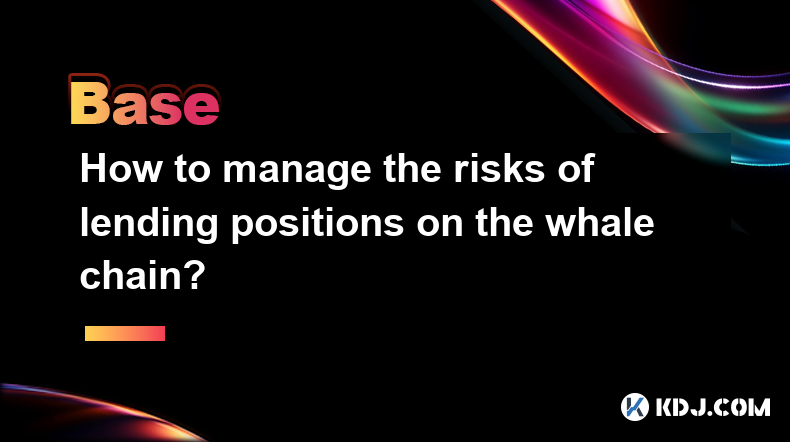
How to manage the risks of lending positions on the whale chain?
Apr 09,2025 at 10:50pm
To manage the risks of lending positions on the whale chain, we need to start from the following aspects: 1. Reasonable control of positions and leverage:Determine the appropriate lending scale and leverage multiple based on your own risk tolerance to avoid excessive leverage. For example, if whales do not have a particularly strong grasp of the market ...
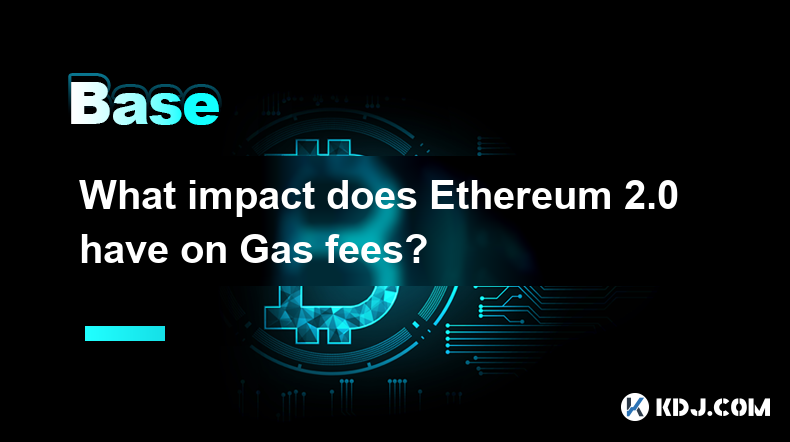
What impact does Ethereum 2.0 have on Gas fees
Apr 09,2025 at 02:43pm
Ethereum 2.0 has had a positive impact on Gas fees in many aspects, mainly reflected in the following aspects: Transformation of consensus mechanism : Ethereum 2.0 shifts from Proof of Work (PoW) to Proof of Stake (PoS). In PoW mode, miners consume a lot of resources in order to obtain block yield rights, so they offset the cost through high handling fe...
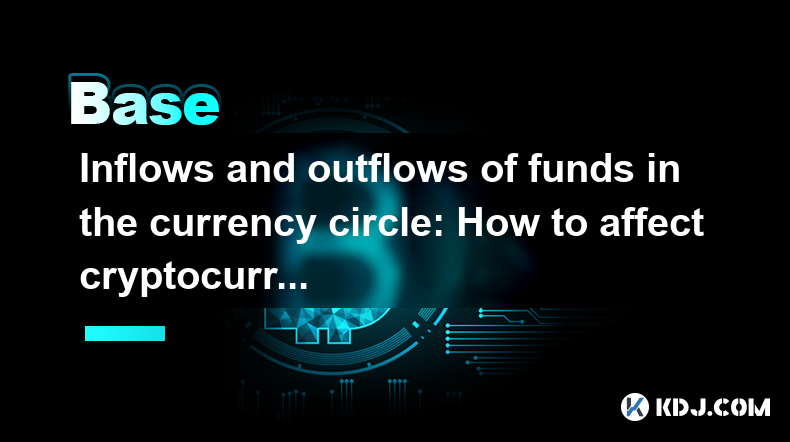
Inflows and outflows of funds in the currency circle: How to affect cryptocurrency price fluctuations?
Apr 09,2025 at 06:28pm
The flow of funds in the currency circle has had a significant impact on cryptocurrency price fluctuations. It is crucial for investors and traders to grasp the dynamics of these capital flows because they directly affect the supply and demand balance of the market, resulting in price increases or falls. This article will explore in-depth how inflows an...
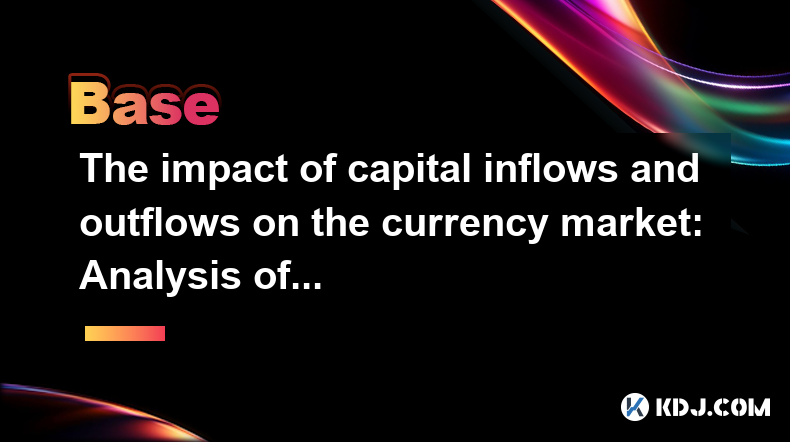
The impact of capital inflows and outflows on the currency market: Analysis of key factors
Apr 09,2025 at 03:21pm
The impact of capital inflows and outflows on the cryptocurrency market is multifaceted, and understanding the key factors of these impacts is crucial for investors and market participants. This article will explore in detail the different aspects of capital inflows and outflows and their impact on the cryptocurrency market. Impact of capital inflows on...
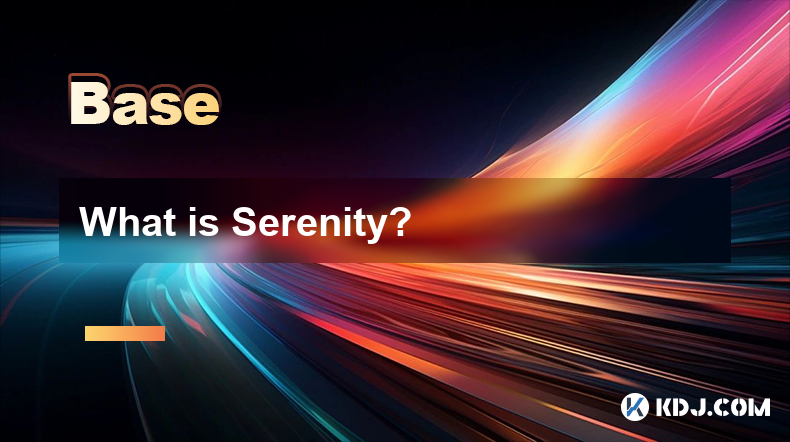
What is Serenity?
Apr 08,2025 at 02:00pm
Serenity, also known as Ethereum 2.0, represents a major upgrade to the Ethereum blockchain. This ambitious project aims to address the scalability, security, and sustainability issues faced by the current Ethereum network. Serenity is not a single update but a series of upgrades that will transform Ethereum into a more efficient and robust platform. Th...
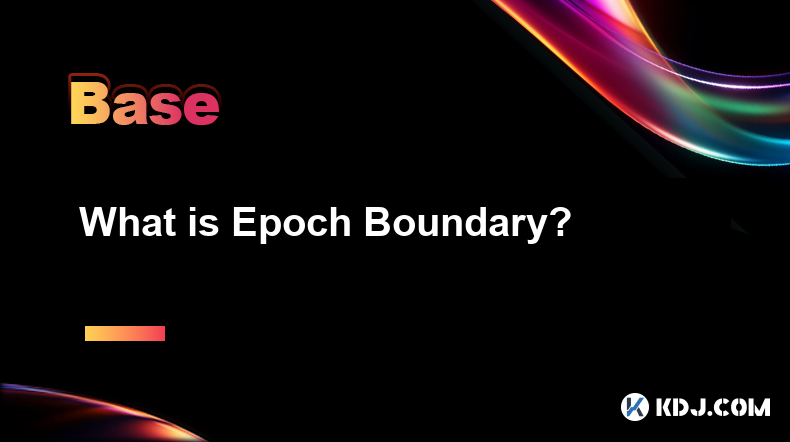
What is Epoch Boundary?
Apr 09,2025 at 04:28pm
What is Epoch Boundary?In the world of cryptocurrencies, particularly those that utilize Proof of Stake (PoS) consensus mechanisms, the term Epoch Boundary plays a crucial role. An epoch boundary marks the transition from one epoch to another within the blockchain's timeline. Understanding this concept is essential for anyone involved in staking, valida...

How to manage the risks of lending positions on the whale chain?
Apr 09,2025 at 10:50pm
To manage the risks of lending positions on the whale chain, we need to start from the following aspects: 1. Reasonable control of positions and leverage:Determine the appropriate lending scale and leverage multiple based on your own risk tolerance to avoid excessive leverage. For example, if whales do not have a particularly strong grasp of the market ...

What impact does Ethereum 2.0 have on Gas fees
Apr 09,2025 at 02:43pm
Ethereum 2.0 has had a positive impact on Gas fees in many aspects, mainly reflected in the following aspects: Transformation of consensus mechanism : Ethereum 2.0 shifts from Proof of Work (PoW) to Proof of Stake (PoS). In PoW mode, miners consume a lot of resources in order to obtain block yield rights, so they offset the cost through high handling fe...

Inflows and outflows of funds in the currency circle: How to affect cryptocurrency price fluctuations?
Apr 09,2025 at 06:28pm
The flow of funds in the currency circle has had a significant impact on cryptocurrency price fluctuations. It is crucial for investors and traders to grasp the dynamics of these capital flows because they directly affect the supply and demand balance of the market, resulting in price increases or falls. This article will explore in-depth how inflows an...

The impact of capital inflows and outflows on the currency market: Analysis of key factors
Apr 09,2025 at 03:21pm
The impact of capital inflows and outflows on the cryptocurrency market is multifaceted, and understanding the key factors of these impacts is crucial for investors and market participants. This article will explore in detail the different aspects of capital inflows and outflows and their impact on the cryptocurrency market. Impact of capital inflows on...

What is Serenity?
Apr 08,2025 at 02:00pm
Serenity, also known as Ethereum 2.0, represents a major upgrade to the Ethereum blockchain. This ambitious project aims to address the scalability, security, and sustainability issues faced by the current Ethereum network. Serenity is not a single update but a series of upgrades that will transform Ethereum into a more efficient and robust platform. Th...

What is Epoch Boundary?
Apr 09,2025 at 04:28pm
What is Epoch Boundary?In the world of cryptocurrencies, particularly those that utilize Proof of Stake (PoS) consensus mechanisms, the term Epoch Boundary plays a crucial role. An epoch boundary marks the transition from one epoch to another within the blockchain's timeline. Understanding this concept is essential for anyone involved in staking, valida...
See all articles






















































































